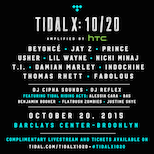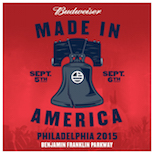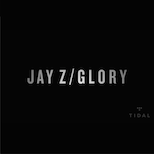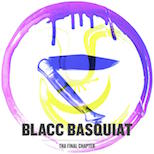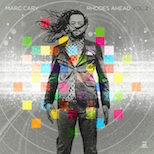Gary Clark Jr. – In The Key of G
11.08.2012
MUSIC
Gary Clark, Jr. has been on fire in 2012. The enigmatic guitarist has toured and performed nonstop all over the country, from Lollapalooza to Bonnaroo to the Made In America Festival and everywhere in between, playing more North American festivals than any other artist in the world. Add in the recent release and constant promotion of his latest album, Blak And Blu, one can see how Clark has grown into quite a commodity. None of it would be possible of course, without Clark being one of the best at what he does: playing the guitar, something he’s been doing confidently since he had his first show in Austin at age 14 (he’s now 28). Amidst his busy tour schedule, late night TV performances and more, Life+Times was able to catch the blues guitarist to talk about his latest album and how his life has changed in the last year.
Life+Times: Is it fair to say you’re in pretty high demand right now? Would you agree with that?
Gary Clark Jr.: Yeah, I think so. It’s a great thing though. A lot different.
L+T: Playing in Austin since you were a kid, how does it feel to finally be at this point?
GCJ: It feels great. It’s kind of a surreal experience for me right now. It’s something I’ve always thought about and dreamed about, how it would break out of Austin, be on national tours and get to travel. That’s what I’m doing, I just want to [enjoy] every moment. I’m good, I’m grateful.
L+T: Talk about your experience over the summer, playing so many different music festivals, including Made In America, and how it helped you grow as an artist.
GCJ: It was a really humbling experience for me. I’m kind of used to the club scene and small venues like that, so it was great for me. It was a great experience learning how musical festivals are, I hadn’t really experienced that a whole lot. I spent more time on the blues festival scene. To be from the blues genre and go to festivals like that [Made In America], with all types of music, it was nice. It was nice because you had folks that came [specifically] to your show, then you have people walking by who kind of get curious and walk into the show. It was neat, it was a great experience for me, and the band got tight – folks are watching it, family members are live streaming it, so it’s gotta be tight.
L+T: The album is pretty diverse. Why did you decide to include so many sounds on your album?
GCJ: I’ve always kind of jumped through genres. When I was growing I was always listening to anything it didn’t really matter: blues, rock, soul, hip-hop, jazz, country, folk. I’ve always been experimenting with that, so I think it helped me because in the last year, we’ve been all over the place. [The diversity] was fitting for the festival setting because there was a little something for everybody. And for the album, I just wanted to branch out and show every side of me, musically and artistically, from the loud, cranking guitar stuff to the mellow, soul, R&B vibes. I never wanted to be categorized and put into a box since I first started playing. I think it’s worked out, going around playing these festivals from Made In America to rock festivals, blues festivals and jazz.
L+T: How do you maintain the blues on every record, despite moving through so many different genres?
GCJ: To me, it’s like the foundation. Blues is the original African-American music. Blues and gospel. Through our time, it’s kind of the same story, just with a twist on it as far as time, mindset, political movements, but it’s [the blues] still the same thing. It’s the common root in music.
L+T: One of the songs on the album is a Jimi Hendrix cover [“Third Stone From The Sun”], which you’ve performed many times live as well. Talk about his influence on you and why you’ve taken such a liking to that particular song.
GCJ: Jimi Hendrix was a major influence on me. His songwriting, guitar playing, his style, the way he expressed himself. I wanted to be involved in music since I was a kid, and he was the first guitar player [I came across] that was kind of wild, kind of different. He’s Black, big afro. It was ok to let it all loose, and I felt empowered and inspired by that when I was trying to find my voice, where I was at, what I wanted to do with my life. I heard this record – it was one of the first one’s I listened to – and it just blew my mind. I remember the moment when I first heard it and how I felt. I don’t think I would be doing what I’m doing if it wasn’t for him and guys like Albert Collins, who’s also a part of that song. I just wanted to say that I respected what they did, I appreciate it and that I know where I come from. I wanted to tip my hat to them and not try to just cover their songs, or to do a better version of them. It’s a song that I’ve been performing ever since I started running around with my guitar performing in Austin, so I wanted to put it on record.
L+T: As your first major label studio release, how was it different putting this album together compared to past projects?
GCJ: The recording process was different for me. I’ve always done things low-fi in my own studio, been on the boards in the studio doing it mostly myself. For this album, I had Mike Elizondo producing with me, which was cool and different. He introduced me to different guitar tones and really stepping outside of my comfort zone for this album, not as far as songs or styles, but sonically, I guess, beyond normal guitar playing – bringing in keys, horns and things like that. I was also in L.A. I had done almost everything in Austin, so that was different for me. It was a good experience for me. I was ready for that moment, because I’ve been kind of selfish with it, so it was good to work with somebody.
L+T: How was growing up in the Austin music scene? How did that help mold you as a blues artist?
GCJ: Well, Austin’s blues scene is really tight. When I first started playing I was part of a blues jam group. Really that’s how I learned the music, by getting up on stage and sharing a record, hearing, “We’re gonna play this song in the key of E, it goes like this,” and just follow along and pick up the record. There’s a lot of music sharing in that community. So I was introduced to Clifford Antone, who basically made the blues scene in Austin. I was around, sharing stories and on stage with guys like James Cotton, Jimmy Vaughan – who’s a Texas guitar legend. So I really got to know the history of the music and it was important to be a part of that. Also growing up, there’s 6th Street, where you can walk around see anything from a jazz club, then next door would be a country singer, further down from that you have electronic scene, a blues band across the street or whatever. I was soaking up everything, I never really filtered or wasn’t open to anything. It’s just kind of how the town moves – mix and mingle, very diverse. Musicians had no problems jumping in and out of different bands, different genres. Growing up like that, that was normal for me, jumping in and out, it helped me as an artist and a musician.
L+T: How has hip-hop impacted and influenced your approach to music?
GCJ: The production process of hip-hop has [impacted me the most]. I remember hearing Tupac and Biggie’s records. I wanted to understand how it worked. I got a little beat machine with a keyboard and turntables and started creating songs that way. You can tell probably in some of the drum loops and scratches. I was really intrigued and impressed with how guys could take music, old records and put their stories on it. That process and reaching back to what came before you, showing that some love, then putting your own thing on top of it. That made a big impact on me, and I think that’s why in a lot of my shows and on my records I reach back and do something like “Next Door Neighbor Blues” then jump in and do something like “The Life,” it all makes sense to me.
L+T: Does all the success and notoriety ever get overwhelming?
GCJ: Yeah, it does. I have those moments where at the end of the day I’ll sit back and reflect and be like, “Whoa, I wasn’t expecting this.” But it’s all good, you know. I’m not getting as much sleep as I would like to, but I feel like when I make something I want to enjoy it. It’s a good kind of overwhelming. It beats sitting around doing nothing that’s for sure, and I did a whole lot of that for a minute.
